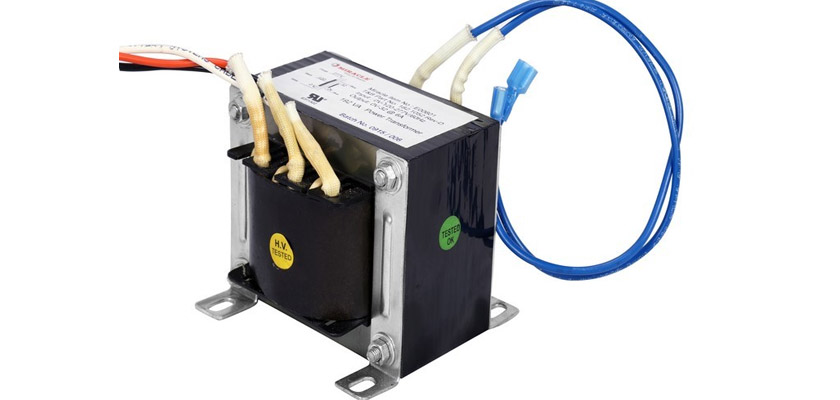The electrical devices that transfer electrical energy from one circuit to another through electromagnetic induction to step up or step down voltage levels are known as transformers. These equipment are made up of lots of different parts performing different functions. Every big and tiny part of a transformer plays a very vital role in its functioning. Listed below are some of the most important parts of power transformers in India.
Steel tank
The most important part of a transformer, the steel tank is cylindrical or cubical, and holds the core, windings and other important devices of the transformer. It is coated with colour internally and externally for safety and protection; and is filled with insulating oil.
Conservator
Connected above the main tank of the transformer, the conservator is a metallic cylindrical airtight drum that conserves the transformer oil. The normal oil level within the conservator is in the middle to allow the oil to expand or contract with temperature variations. The conservator helps to reduce oxidation by reducing the area of air around the oil.
Buchholz Relay
The Buchholz Relay is protective device that is connected to a pipe between the main tank and conservator to sense faults occurring within the transformer. It operates due to the gases emitted owing to the decomposition of transformer oil during internal faults. The main t ask of this relay is to provide protection for low oil level and high temperature.
Core
The core is made of laminated soft iron or steel that provides a low reluctance and continuous path to the flow of magnetic flux, and reduces eddy current loss and Hysteresis loss. Factors like voltage, current and frequency are considered before composing a transformer core. The diameter of this core is directly proportional to copper loss and inversely proportional to iron loss. Decrease in the diameter of the core reduces the weight of steel used, which results in lesser core loss and increased copper loss. The exactly opposite occurs when the diameter is increased.
Windings
Windings are several turns of copper coils bundled together; with each winding in the core insulated from the other. Windings are classified on the basis of the input and output supply, and the voltage range. There are two categories of windings present in a transformer – primary windings to which input voltage is applied, and secondary windings to which output voltage is applied.
Breather
Due to the expansion and contraction of the insulating oil, moisture can arise which cause the pressure inside the conservator to change. This pressure is balanced by the flow of atmospheric air in and out of the conservator. If the moisture gets in touch with the insulating oil, it can affect the insulation and lead to internal faults. This makes it very important to keep the air entering the tank to be moisture-free. This is where the breather comes to the rescue, with its silica gel filling that absorbs all the moisture from the air that enters inside. Therefore, the breather acts like an air filter and controls the moisture levels inside the transformer.
Tap changer
Tap changers are used to balance the voltage variations happening inside a transformer. These equipment are available as on-load or off-load. The on-load tap changers tapping can be changed without isolating the transformer from the supply, while the off-load tap changers tapping is done only after disconnecting the transformer.
Cooling Tubes
As the name suggests, cooling tubes are used to cool the transformer oil. The transformer oil is either naturally or forcefully circulated through the cooling tubes to be cooled. In case of natural circulation, the temperature of the oil rises and the hot oil rises to the top while the cold oil sinks downward; while in case of forced circulation, an external pump is used for the same process.
Explosion vent
In case of heavy internal faults, the boiling hot oil within the transformer needs to be expelled out to avoid explosion of the transformer. This is done through the explosion vent, which is placed at a level above the level of the conservator.
Thermometer
Just like a normal thermometer, even the thermometer present in a transformer is used to measure the temperature. Used in transformers with value above 50KVA, the thermometer measure two temperatures – one of the oil, and second of the windings. In case of temperature rise above a safe level, the thermometer activates a signal or alarm.




